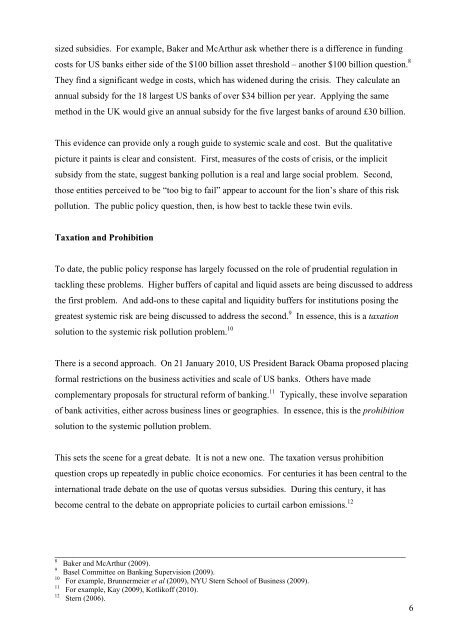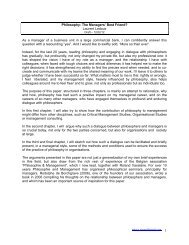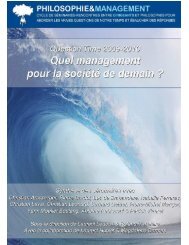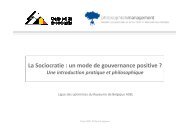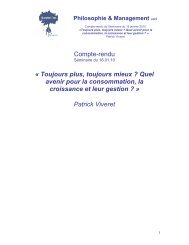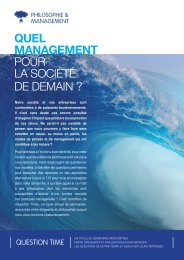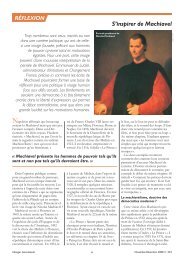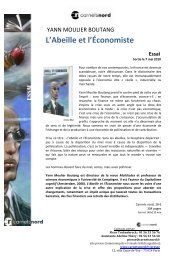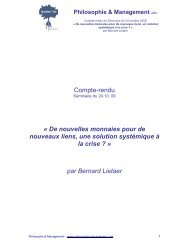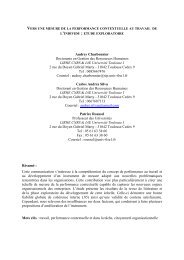The $100 billion question - Signal Lake Venture Fund
The $100 billion question - Signal Lake Venture Fund
The $100 billion question - Signal Lake Venture Fund
Create successful ePaper yourself
Turn your PDF publications into a flip-book with our unique Google optimized e-Paper software.
sized subsidies. For example, Baker and McArthur ask whether there is a difference in funding<br />
costs for US banks either side of the <strong>$100</strong> <strong>billion</strong> asset threshold – another <strong>$100</strong> <strong>billion</strong> <strong>question</strong>. 8<br />
<strong>The</strong>y find a significant wedge in costs, which has widened during the crisis. <strong>The</strong>y calculate an<br />
annual subsidy for the 18 largest US banks of over $34 <strong>billion</strong> per year. Applying the same<br />
method in the UK would give an annual subsidy for the five largest banks of around £30 <strong>billion</strong>.<br />
This evidence can provide only a rough guide to systemic scale and cost. But the qualitative<br />
picture it paints is clear and consistent. First, measures of the costs of crisis, or the implicit<br />
subsidy from the state, suggest banking pollution is a real and large social problem. Second,<br />
those entities perceived to be “too big to fail” appear to account for the lion’s share of this risk<br />
pollution. <strong>The</strong> public policy <strong>question</strong>, then, is how best to tackle these twin evils.<br />
Taxation and Prohibition<br />
To date, the public policy response has largely focussed on the role of prudential regulation in<br />
tackling these problems. Higher buffers of capital and liquid assets are being discussed to address<br />
the first problem. And add-ons to these capital and liquidity buffers for institutions posing the<br />
greatest systemic risk are being discussed to address the second. 9 In essence, this is a taxation<br />
solution to the systemic risk pollution problem. 10<br />
<strong>The</strong>re is a second approach. On 21 January 2010, US President Barack Obama proposed placing<br />
formal restrictions on the business activities and scale of US banks. Others have made<br />
complementary proposals for structural reform of banking. 11 Typically, these involve separation<br />
of bank activities, either across business lines or geographies. In essence, this is the prohibition<br />
solution to the systemic pollution problem.<br />
This sets the scene for a great debate. It is not a new one. <strong>The</strong> taxation versus prohibition<br />
<strong>question</strong> crops up repeatedly in public choice economics. For centuries it has been central to the<br />
international trade debate on the use of quotas versus subsidies. During this century, it has<br />
become central to the debate on appropriate policies to curtail carbon emissions. 12<br />
_____________________________________________________________________________<br />
8<br />
Baker and McArthur (2009).<br />
9<br />
Basel Committee on Banking Supervision (2009).<br />
10<br />
For example, Brunnermeier et al (2009), NYU Stern School of Business (2009).<br />
11<br />
For example, Kay (2009), Kotlikoff (2010).<br />
12<br />
Stern (2006).<br />
6


